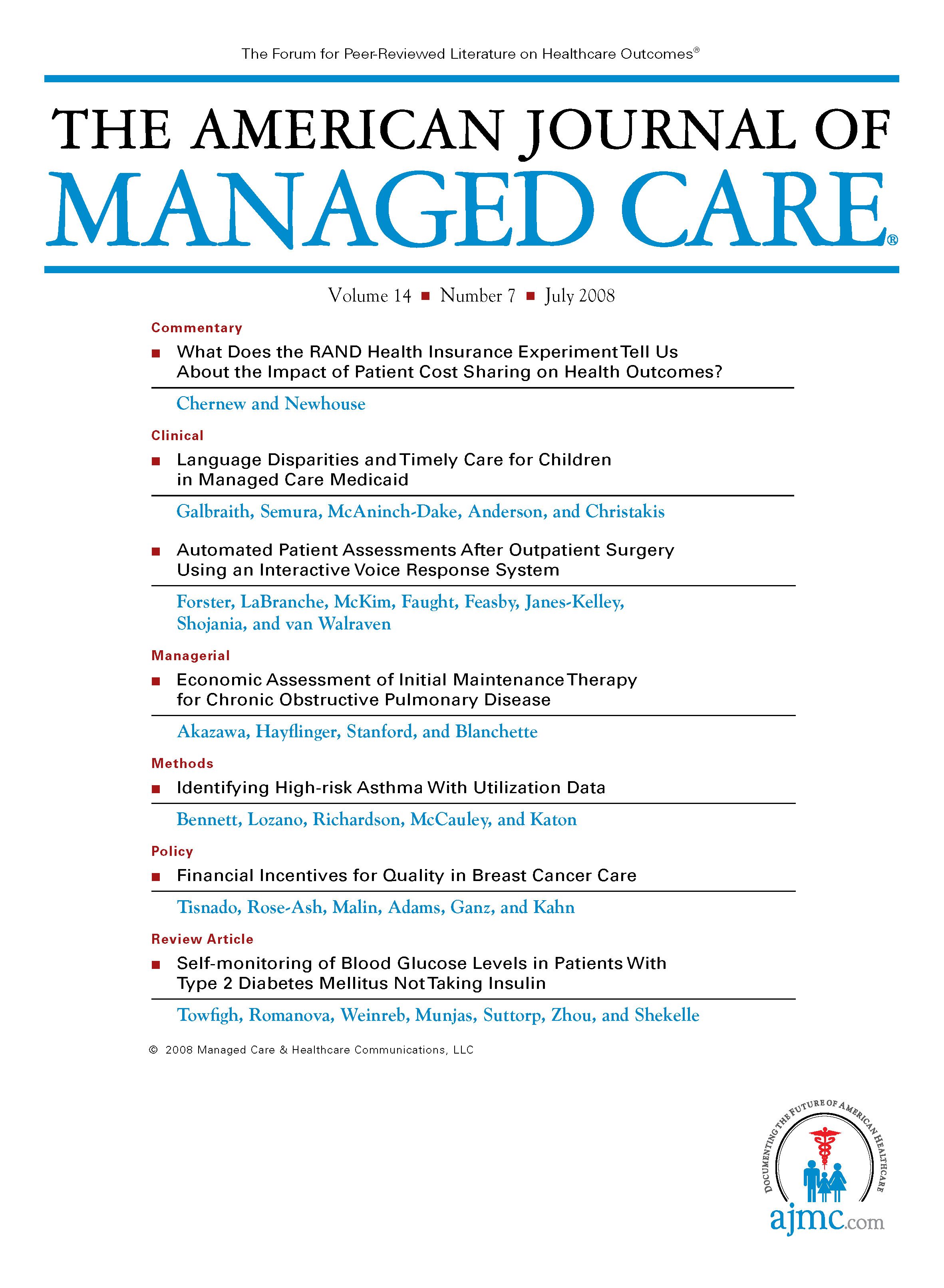- Center on Health Equity and Access
- Clinical
- Health Care Cost
- Health Care Delivery
- Insurance
- Policy
- Technology
- Value-Based Care
Computerized Physician Order Entry and Clinical Decision Support Systems: Early Stages in Demonstrating Improvements in Patient Outcomes
To improve quality of patient care in the United States, the Institute of Medicine, the Agency for Healthcare Research and Quality, and the Leapfrog Group advocate the implementation of computerized physician order entry (CPOE) systems to reduce medical errors.1-3 As a result, many healthcare institutions feel compelled to adopt this technology. However, implementing CPOE is complex and often not successful.4 The system may introduce new types of errors5 and, even with CPOE, adverse drug event rates are still high.6 It is also costly to implement with an estimated price of $8 million (US) for a 500-bed hospital. 7 Finally, many argue that the effectiveness of CPOE is still unproved. In a report on patient safety practices from the Agency for Healthcare Research and Quality, the evidence for CPOE consisted of just 4 studies, only 1 of which was a randomized trial.8-11 These studies showed a reduction in medical errors, but no change in actual adverse events or patient outcomes.
Journal
In this issue of the , Palen et al report on the findings of a study in which physicians at a managed care organization were randomized to receive drug-laboratory monitoring alerts through CPOE or to a control group that did not receive alerts.12 The primary outcome was compliance with the alert recommendations. Compliance with alert recommendations was similar in both groups, and providing drug-laboratory monitoring alerts made no difference to practitioner behavior. From these findings, it would seem that CPOE and its associated decision support systems have little impact on changing physician behavior or improving care.
However, it is important to remember that CPOE systems are still in their infancy. While CPOE has been around for a few decades,13 we are still learning how to manage CPOE efficiently. One component of CPOE that may be effective is clinical decision support systems (CDSSs). CDSSs are information systems designed to improve clinical decision making,14 and this is best achieved at the point of care. And while evidence for the effectiveness of CPOE in changing physician behavior is not strong, good evidence exists to show that a CDSS can and does change practitioner performance.14
So why did the decision support system in this study not work? With the benefit of hindsight, I believe there are 3 potential reasons. First, the physician alerting prompts were passive. Passive alerting does not stop the physician from a course of action, whereas active alerting prompts the physician in order to continue. In a recent systematic review, systems that used passive decision support were found to be less likely to succeed in changing physician behavior than those using active alerting (47% vs 73% interventions that were successful).14 Physicians work in complex, busy environments and appear to require automatic prompting to change behavior.
Second, the alerts were not targeted to the action. Ideally, alerts should only display when truly indicated or else user annoyance and fatigue will occur. Borrowing from the terminology of diagnostic testing, physicians desire highly specific alerts, with few false positives to cause alert annoyance. It appears that in this study, the alerts displayed anytime one of the selected medications was ordered, irrespective of whether the suggested testing was already ordered. For example, physicians in the control group (93%) were highly compliant with recommendations for monitoring use of pioglitazone. For the intervention group, this would likely mean that when pioglitazone was ordered there was a 93% chance that the suggested tests were already ordered, giving an annoyingly high rate of false positives. Ideally, alerts would display only when physicians were not already performing the tests suggested–in this case 7% of the time for pioglitazone.
Third, the CDSS may not have correctly addressed the complexity of the process of care at this site. Physician behavior is difficult to change, and the most successful CDSSs are those that are custom developed.14 While the system in the study was actually codeveloped with IBM and may have allowed for extensive customization, most institutions rely solely on vendor software for CPOE and CDSSs. Unfortunately, we may not yet be at the stage where effective decision support comes out of the box.
Ultimately, CPOE and CDSSs are the way forward. The major hurdle to providing evidence-based care is not generating new knowledge; it is effectively applying and utilizing available, current knowledge in patient care.15 Whether it is called knowledge uptake, translation,15 or transfer,16 this burgeoning field addresses the difficulties of having information flow from evidence to practice. Current approaches such as educational material, audit-and-feedback, reminders, and multifaceted interventions have shown limited effect, with the mean improvement of these strategies to change physician behavior being between 6% and 14%.17
Now consider the future dissemination of a new guideline for heart failure through CPOE, using CDSSs. At an institutional level, once approved by the Medical Advisory Committee, the guideline changes are rapidly incorporated into the electronic patient record. The physician of the next patient who is seen and who could benefit from the new heart failure therapy will be notified of the change automatically and given direct, timely access to the corresponding evidence available. This notification will be greatly improved over current reminders systems, optimized to have the greatest chance to change the physician's behavior and improve the patient's care.
Studies such as the one conducted by Palen et al are essential to the ongoing effort to improve decision support and CPOE. Moving forward, further high-quality research including randomized, controlled trials will be necessary to determine how best to provide physician order entry and decision support to improve patient care.
From the Department of Medicine, University of Toronto, Ontario, Canada.
Address correspondence to: Robert Wu, 14EN Room 222, Toronto General Hospital, University Health Network, 200 Elizabeth St, Toronto, ON M5G 2C4, Canada. E-mail: robert.wu@uhn.on.ca.


